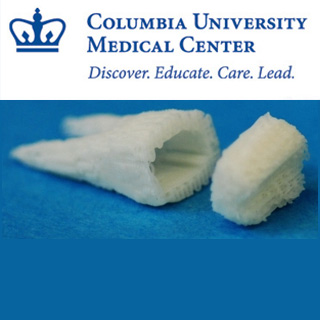
The technique was discovered by using an animal-model. It helped to determine homing of stem cells to a scaffold of natural materials and integration of the surrounding tissue. This method may not call for harvesting stem cell lines or creating an environment outside of the body where the tooth is grown and matured, yet the tooth can be probably grown ‘orthotopically,’ or in the socket. This will aid the tooth to merge with the surrounding tissue in a way which hard metals or other materials are not capable of.
Dr. Jeremy Mao, the Edward V. Zegarelli Professor of Dental Medicine at Columbia University Medical Center and colleagues explained, “These findings represent the first report of regeneration of anatomically shaped tooth-like structures in vivo, and by cell homing without cell delivery. The potency of cell homing is substantiated not only by cell recruitment into scaffold microchannels, but also by the regeneration of periodontal ligaments and newly formed alveolar bone.”
Many people who have a missing adult tooth or have lost all of their adult teeth depend on either dentures or dental implants that may have psycho-social ramifications. But even after undergoing these generally painful and potentially protracted implants they face an inability to adjust with the surrounding jaw bone and are forced to conduct various changes throughout their life.
Usually general tooth implants may include a cone-shaped titanium screw topped with a roughened or smooth surface. They are placed in the jaw bone by an outpatient procedure, but are ascertained to take two-six months to heal even if it recovers quickly. Then it is quite possible that the implants may also fail. The success of the implant can possibly depend on multiple visits to different clinicians, including general dentists, oral surgeons, prosthodontists and periodontists. But this new experiment claims to employ a very natural process and recover much more quickly. They reveal that this implant lasts for the lifetime of the patient.
Dr. Ira B. Lamster, dean of the College of Dental Medicine, remarked “This research provides an example of what is achievable when today’s biology is applied to common clinical problems. Dr. Mao’s research is a look into the future of dental medicine.â€
The researchers now aim to introduce this tooth generation in the most minimal cost that they can. This will allow patients to undergo this implant at an affordable price.
The research was published in the Journal of Dental Research.
